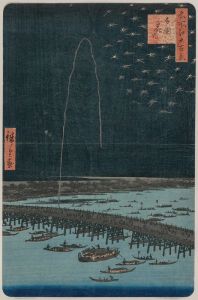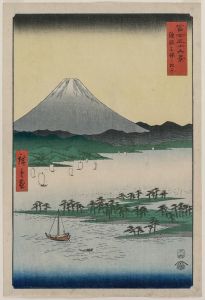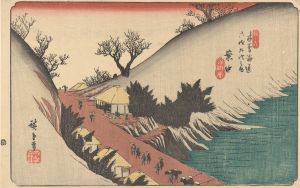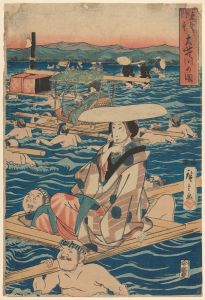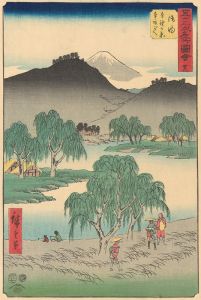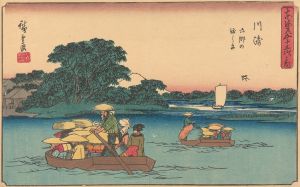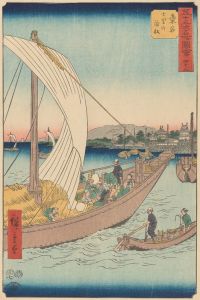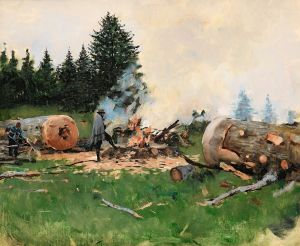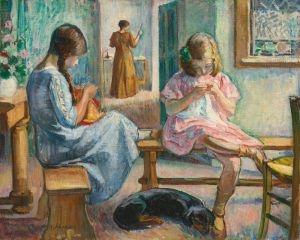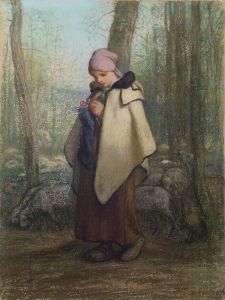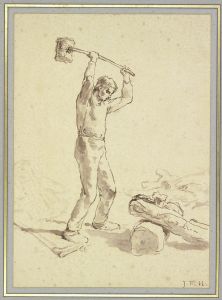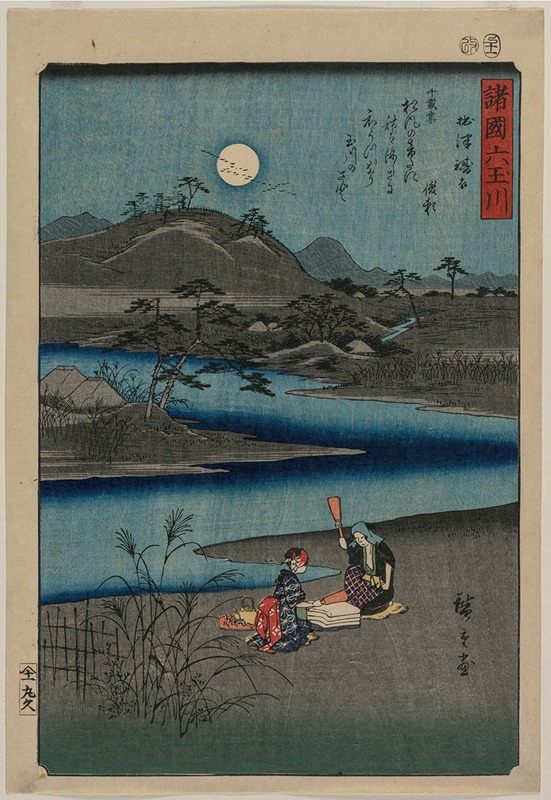
Cloth Fulling Jewel River in Settsu, from the series Six Jewel Rivers of the Various Provinces
A hand-painted replica of Andō Hiroshige’s masterpiece Cloth Fulling Jewel River in Settsu, from the series Six Jewel Rivers of the Various Provinces, meticulously crafted by professional artists to capture the true essence of the original. Each piece is created with museum-quality canvas and rare mineral pigments, carefully painted by experienced artists with delicate brushstrokes and rich, layered colors to perfectly recreate the texture of the original artwork. Unlike machine-printed reproductions, this hand-painted version brings the painting to life, infused with the artist’s emotions and skill in every stroke. Whether for personal collection or home decoration, it instantly elevates the artistic atmosphere of any space.
Andō Hiroshige, a renowned Japanese ukiyo-e artist of the Edo period, is celebrated for his landscape prints and depictions of nature. One of his notable works is "Cloth Fulling Jewel River in Settsu," part of the series "Six Jewel Rivers of the Various Provinces" (Shokoku Mu Tamagawa). This series is a collection of woodblock prints that illustrate the famous "Six Jewel Rivers" of Japan, each known for its scenic beauty and cultural significance.
The "Jewel Rivers" are a traditional theme in Japanese art and poetry, often celebrated in classical literature for their picturesque landscapes and seasonal beauty. Hiroshige's series captures the essence of these rivers, each located in different provinces, and reflects the harmonious relationship between nature and human activity.
"Cloth Fulling Jewel River in Settsu" specifically depicts the river in the Settsu Province, an area that corresponds to parts of modern-day Osaka and Hyōgo Prefectures. The print illustrates the traditional activity of cloth fulling, a process where cloth is beaten to cleanse and thicken it, often conducted by the riverbanks. This activity is a common motif in Japanese art, symbolizing the industriousness and daily life of the people.
Hiroshige's work is characterized by its use of vibrant colors, intricate details, and a keen sense of composition. In this print, he employs these techniques to convey the serene yet dynamic atmosphere of the river scene. The flowing water, the figures engaged in cloth fulling, and the surrounding landscape are depicted with a delicate balance, showcasing Hiroshige's mastery in capturing the transient beauty of nature.
The "Six Jewel Rivers" series, including the "Cloth Fulling Jewel River in Settsu," is part of Hiroshige's broader body of work that contributed to the popularity of landscape prints during the Edo period. His ability to depict the natural world with both realism and poetic elegance made his prints highly sought after, influencing not only Japanese art but also Western artists, particularly during the Japonisme movement in the late 19th century.
Hiroshige's prints were produced using the traditional ukiyo-e woodblock printing technique, which involved collaboration between the artist, carvers, printers, and publishers. This collaborative process was essential in bringing Hiroshige's artistic vision to life, allowing for the wide distribution of his works.
"Cloth Fulling Jewel River in Settsu" and the other prints in the "Six Jewel Rivers" series remain significant examples of Hiroshige's contribution to the ukiyo-e genre. They reflect the cultural and artistic values of the Edo period, emphasizing the beauty of nature and the integration of human life within it. Hiroshige's legacy endures through these works, offering insight into the aesthetic and cultural sensibilities of his time.





